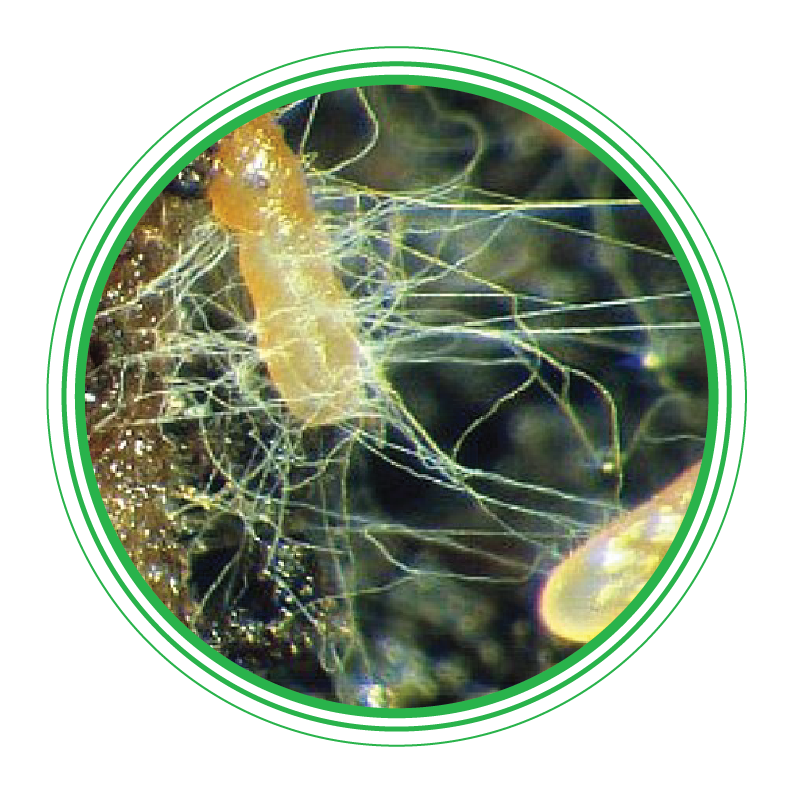Mycorrhizae (l)

The BEnefits
Mycorrhizal fungi have existed since the first plants appeared on dry land more than 450 million years ago. They form a life-giving symbiotic relationship with plant roots. They are called mycorrhizae from the Greek “mukés”, meaning fungus, and “rhiza,” meaning roots.
Mycorrhizae form a network of filaments that enables plant roots to draw nutrients from the soil and or water column that the root system would not be able to access otherwise.
The higher the concentration of this symbiosis the faster and stronger the plant’s roots will become. This, in turn, means a stronger, healthier, more vigorous plant. “It also makes the plant less susceptible to stress and other environmental issues including drought and poor ground conditions like salinity.”
However, soil or water conditions that have been disturbed, dug, or refilled compromises this balance for the roots and thus needs to be compensated for, because once disturbed this can cause a lack of nutrition the plant can obtain into its roots. Mycorrhizae are formed with more than 90% of plant species and are dependent on this relationship to survive.
There are two major groups of Mycorrhizal fungi: ectomycorrhizal and endomycorrhizal fungi. Ectomycorrhizal develops exclusively on the exterior of root cells, whereas endomycorrhizal penetrate the plant cells where direct metabolic exchanges can occur. Ectomycorrhizae are essentially found on trees and form visible structures whereas endomycorrhizal fungi colonize trees as well as shrubs and most herbaceous plants and do not form visible structures. Other types of mycorrhizae do exist in nature but are specific to given families of plants Ex: orchids and the ericaceous families.
Soil structure refers to soil particle aggregation as well as pore spaces (spaces between the granules of the dirt). Soil structure is of critical importance to the preservation of soil functions and fertility. Mycorrhizal fungi play a major role in soil aggregation through hyphae networking and glomalin (biological glue) production. Therefore, their presence in the soil is essential to maintain physical soil properties.
Research shows that the lack of Mycorrhizal fungi can create problems with trees, shrubs, and plants when they are growing in our gardens. Unfortunately, our day to day gardening tasks can negatively affect these delicate Mycorrhizal fungi. For example, the use of chemical fertilizers, tilling, and hoeing can disrupt or even destroy the Mycorrhizal fungi found in your soil. Additionally, many of the plants we purchase and grow in the garden lack the necessary Mycorrhizal fungi growing on their roots when we plant them. Furthermore, our home garden soils may lack enough Mycorrhizal fungi to truly benefit our plants.
However, the good news is that you can stimulate the growth of Mycorrhizal fungi and get them to work more efficiently with “Liqui-Dirt” because we fix these issues in 2 separate “Organic” ways. First, we maintain “OMRI” standards to gather these fungi, propagate, and harvest its spores. Secondly, we are able to feed the fungi a specific diet to get the most from them for your plant. Also because of the fermentation process, we employ we do not compromise the spores ability to start to grow when introduced to your plants roots.
